Living in Los Angeles has its good points. One of them is that when it's time to get out of Dodge for a few hours, there are some pretty wonderful places to go. Beaches, mountains, desert, forest - take your pick of pleasures. When it's time for me to get away, one of my favorite locales is wine country.
I like the Central Coast. There's something to be said for geographical desirability. A scant two and a half hours from L.A. lies the Santa Ynez Valley. I have really come to love the wines from this beautiful countryside, despite the pun in the title of my blog. I have one colleague in the Santa Barbara area who always needles me that it should be "Now and Pinot." Not a fan of wine puns, apparently. But whatever the varietal, I so look forward to my tasting trips to that magical area.
One recent Wednesday came and it was time to get away. But as is often the case, the occasion would not present itself until Sunday. When it did, though, we put Los Angeles in the rear-view mirror until the 101 turned right and all that was around us was wine country.
I'll limit myself to the four winery stops we made, although there were many other visits that added a lot of pleasure to the day. For one thing, you should stop at every single farm stand you see. There's still corn available, but the strawberries and blueberries are about done. Apples and pears are coming up, though.
*****
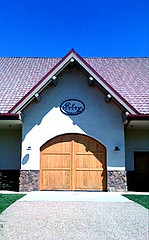 Foley Estate Vineyards and Winery
Foley Estate Vineyards and Winery - Bill Foley is the envy of many in the wine business. His vineyards in the limestone-rich Santa Rita Hills are perfectly situated for growing wonderful Pinot Noir and Chardonnay. The beautiful wine country that surrounds his tasting room off Highway 246 provides the perfect locale for sampling those wines. The tasting room itself is pretty nice, too.
Tasting notes:
Chardonnay, Steel 2008 ($28) - There's a tropical nose - star fruit? - and also lime aromas. Clean and crisp on the tongue, well balanced with a very nice finish.
Chardonnay, Rancho Santa Rosa 2007 ($30) - 12 months in oak for this one. Apples and pears are on the nose with a great little hint of butterscotch on top of the crisp fruit flavors. It seems more crisp that lush. A buttery finish.
Foley & Johnson Dry Rose 2008 ($18) - Rhone blend (Syrah, Grenache, Grenache Gris and Cinsault) is a very pale salmon color. It smells just like a rose! Melon flavors, good acidity, very dry. Medium mouthfeel and finish. A tasting room exclusive.
Pinot Noir, Rancho Santa Rosa 2007 ($40) - A medium-deep red color, very pretty. Nose of blackberries and cherries. It's a very full bodied Pinot. Traces of tea on the palate. Good tannins, but very smooth.
Pinot Noir, Barrel Select 2007 ($50) - An earthy nose with black cherry aromas. Quite interesting on the tongue, with mushroom flavors and coffee, tea. Great finish. A tasting room exclusive.
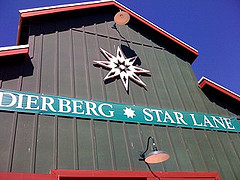 Dierberg and Star Lane Vineyards
Dierberg and Star Lane Vineyards - Jim and Mary Dierberg planted their first grapes in 1997. The idea was to buy some land either in Napa or Bordeaux. Those areas seemed a little crowded, though, and they fell in love with Santa Barbara County at first sight. Between the Dierberg and Star Lane vineyards, the microclimates are well-covered, from coolest to warmest. That gives Dierberg and Star Lane the flexibility to produce a number of wines from fruit sourced on their own property. The big, green barn is a head-turner and the tasting room occupies about a quarter of it.
Tasting notes:
Star Lane Sauvignon Blanc 2007 ($20) - Very New Zealand. A steel/wood combination, the nose offers floral notes and grapefruit dominates the palate. Good acidity.
Dierberg Chardonnay 2006 ($32) - A funky little nose. There's a nutty flavor I really like. Rather heavily influenced by wood. Not a bad thing.
Dierberg Pinot Noir 2006 ($42) - Mushroomy minerals on the nose. Earthy taste with nice tannins. Maybe a little rough for some.
Star Lane Merlot 2006 ($36) - Coffee and chocolate on the nose. Very nice flavor. 9% Cab Franc, 3% Cab Sauvignon.
Dierberg Syrah 2006 ($34) - Very dark in color with a smokey, leathery nose. Tastes of chalky minerals, and blackberry. Yum.
Star Lane Cabernet Sauvignon 2005 ($42) - The floral, perfumy nose gives way to a taste of the Old West: dusty sage predominant. Very smooth. 80% Cab S, 15% Cab Franc, 5% Petit Verdot.
Star Lane Cabernet Sauvignon "Astral" 2005 ($80) - This reserve cab was a surprise taste. 100%, from the highest part of the Star Lane property. Very chocolatey, rich nose. Smooth, complex taste with earth and coffee notes, lucsious blackberry.
Three Saints Cabernet Sauvignon 2005 ($22) - Another surprise taste, not on the menu. Tastes of raspberry, cherry, blueberry. Good structure.
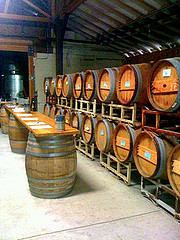 Shoestring Winery
Shoestring Winery - I have probably passed Shoestring Winery two dozen times, always on the way to a restaurant or another winery. I made it a point to stop in and visit on this trip. I'm glad I did. The people were nice, the tasting room and the surrounding grounds were comfortable and the wines were tasty. Picnic tables around the corner from the front door were in bright sun when I stopped by in mid-afternoon, but a couple of large chairs in front were shaded by some spreading trees. It was nice and cool inside, of course, since the tasting room is actually in the barrel room.
Tasting notes:
Rose 2008 ($22) - Light orange in the glass. Not much acidity, but a lovely flavor is very attractive.
Pinot Grigio 2008 ($22) - Flowery with good acidity. Should be a hit with seafood.
Sangiovese 2008 ($35) - Outrageous nose! 26 months in oak. Tastes and smells of cherries and smoke. 10% Cab Franc. My favorite.
Merlot 2005 ($35) - Cola time! Same oak as Sangio (26 months) but seems a little excessive here. Cab Franc blend. Very soft tannins, quite smooth.
Syrah 2005 ($35) - Fruit-forward and oaky (28 months). Very full mouthfeel. They serve it with a square of chocolate, and it's a great idea. Very rich wine.
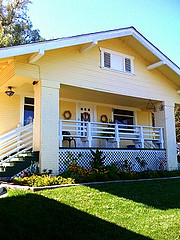 Lincourt Wines
Lincourt Wines - I ended the day the same way I began it, at a Foley property. Lincourt is the little sister winery to Foley Estates. Founded in 1996 by Bill Foley at a former dairy farm, the grounds are beautiful and interesting. The winery and barrel room were once barns, and look it. The tasting room is a Sears Craftsman kit home of the 1920s. I'm sure it was a fine farmhouse then. I know it's a fine a tasting room now. The place is charming.
Tasting notes:
Pinot Blanc, Courtney's Vineyard 2008 ($20) - Melon on the nose, nutty at the end, minerals all over. My favorite, although there's a lot of competition here.
Sauvignon Blanc, Alamo Pintado Vineyard 2008 ($18) - One of Kris Curran's first vintages for Lincourt. My pourer pointed out that Curran is known for Pinot Noir, but she's also good with white wines. No kidding!
Foley and Johnson Rosé 2008 ($18) - The same as the pink from the Foley tasting room: Rhone blend (Syrah, Grenache, Grenache Gris and Cinsault) is a very pale salmon color. It smells just like a rose! Melon flavors, good acidity, very dry. Medium mouthfeel and finish.
Chardonnay, Rancho Santa Rosa 2007 ($26) - Plenty of citrus, but nice and creamy, too.
Pinot Noir, Santa Barbara County 2007 ($28) - Dark fruit and spices on the nose. Big clove action. Medium mouthfeel, with a creaminess and smooth tannins. 12 months in French oak.
Merlot, La Cuesta Vineyard 2005 ($35) - Menthol on the nose? Normally Lincourt blends their Merlot with Cabernet. This one they felt was good enough to stand on its own. I agree.





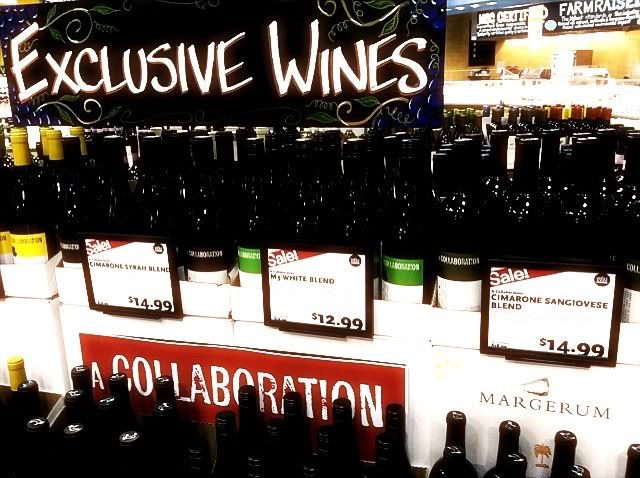





 Foley Estate Vineyards and Winery
Foley Estate Vineyards and Winery Dierberg and Star Lane Vineyards
Dierberg and Star Lane Vineyards Shoestring Winery
Shoestring Winery Lincourt Wines
Lincourt Wines